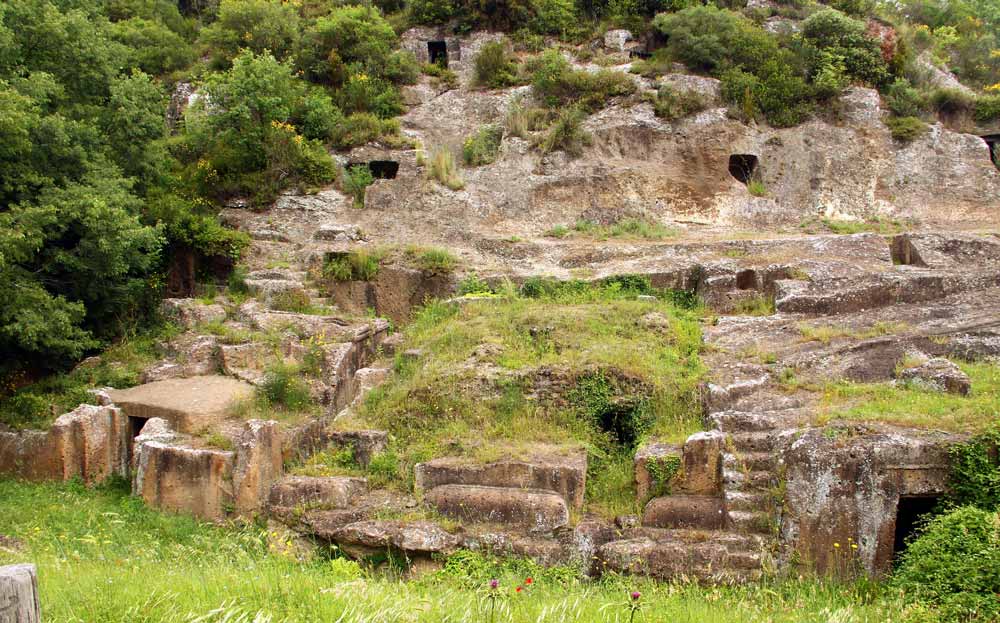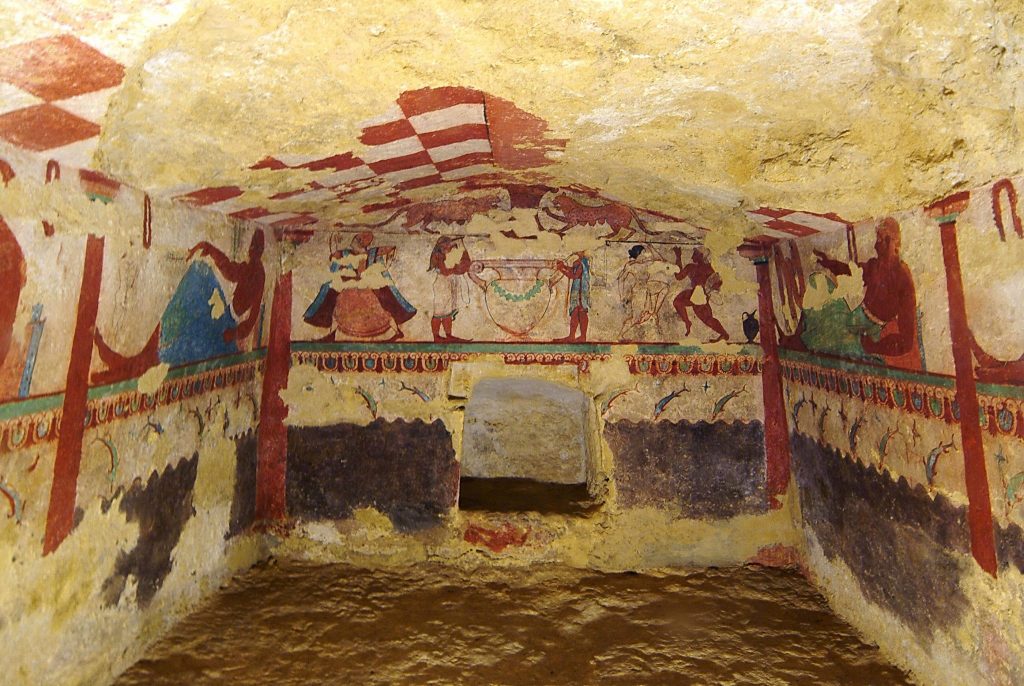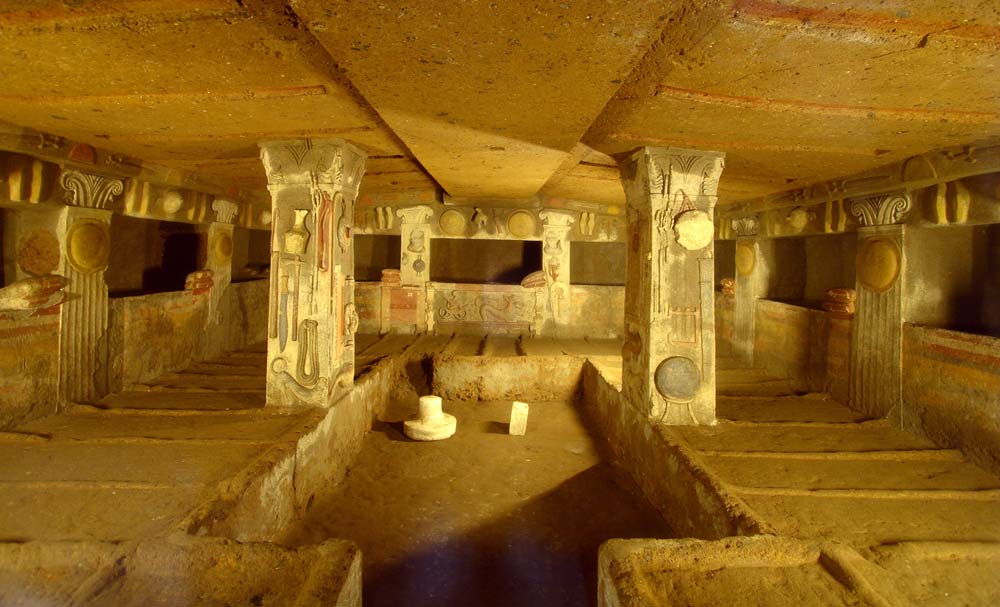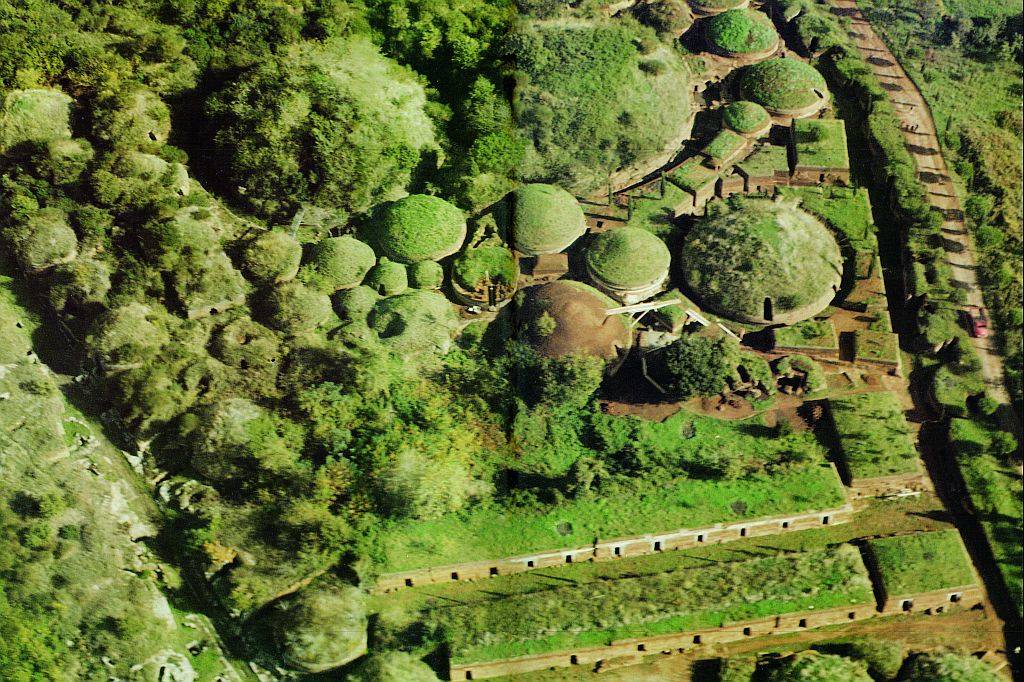The Necropolises of Cerveteri and Tarquinia, UNESCO World Heritage Sites since 2004, exceptional testimonies of the Etruscan Heritage, are a unique example of urban development in pre-Roman Italy. The frescoes in the houses and tombs, representing everyday life, are the only traces of the Etruscan Culture, which played a fundamental role in the birth of the great Roman civilization. Some among the Roman kings were, in fact, Etruscan, and some of the most important buildings in the new Capitoline City feature an Etruscan style.

Archaeological area of San Giovenale in Blera
In Tuscia, the Old Etruria, towns such as Viterbo, Tarquinia, Bolsena, Tuscania, Sutri, Vulci and Cerveteri, developed a highly refined civilization, favoured by constant commercial and cultural exchanges with the Mediterranean countries, as well as a flourishing agriculture, artistic production, metal working and engineering techniques acquired from the Phoenicians.

Tarquinia-Necropolis-of-Monterozzi-Tomba delle Leonesse
The exceptional Necropolis of Monterozzi in Tarquinia is decorated with an abundance of paintings, which allow us to understand the evolution of the Etruscan civilization. We enter people houses, observe them eating, feasting or lying on the klinai, while musicians play, and naked slaves serve food. The images in the tombs depict everyday life, as well as the journey to the afterlife. The most famous graves are the Tomba del Cacciatore, dei Giocolieri, della Pulcella, Cardarelli, della Fustigazione, Fiore di Loto, delle Leonesse, dei Gorgoneion, dei Caronti, dei Leopardi, delle Baccanti, della Caccia e Pesca.
In the heart of the site, overlooking the coastal plain, lies the archaeological area called Doganaccia, which boasts two huge funeral mounds, dating back to the first half of the seventh century BC, the tombs of the King and the Queen
Also noteworthy is the “Museo Nazionale Etrusco di Palazzo Vitelleschi”, an example of Renaissance architecture, which offers, from the loggia on the first floor, a breathtaking view of the sea. The Museum preserves the magnificent sarcophagi of the noble Tarquinian families, including grave goods such the Bocchoris vase (seventh-fifth century BC) or the elegant famous clay sculpture of the Winged Horses, once decorating the Ara della Regina.

Necropolis of Banditaccia in Cerveteri
Continuing towards the Capital, we reach the Etruscan Necropolis of Banditaccia, the main burial area of the ancient Caere, today’s Cerveteri, where most monumental tombs are concentrated. There are around 20,000 extraordinary graves, awarded as World Heritage Sites. The entirely preserved Necropolis of Banditaccia, the largest one we inherited from the ancient world, is a perfect reproduction of a town, with tombs faithfully arranged in accordance with a typical Etruscan village, a unique example of civil architecture lasted around six centuries.

Cerveteri Necropolis of Banditaccia
This uncommon place, immersed in an evocative park of high naturalistic value, is enriched with streets and paths that climb among the tombs, as much as to look like a real village, with a network of roads and blocks.
Our excursion ends with the Museo Nazionale Archeologico Cerite, hosted in the Castello Ruspoli, in the centre of the modern town, where the different cultural phases of ancient Cerveteri from the nineth century BC until the age of Romanization are explained. The Museum exhibits, displayed in chronological order, mainly come from the necropolises that surrounded the ancient urban centre.
The Necropolis of Tarquinia and Cerveteri enrich the list of World Heritage Sites in Lazio.
